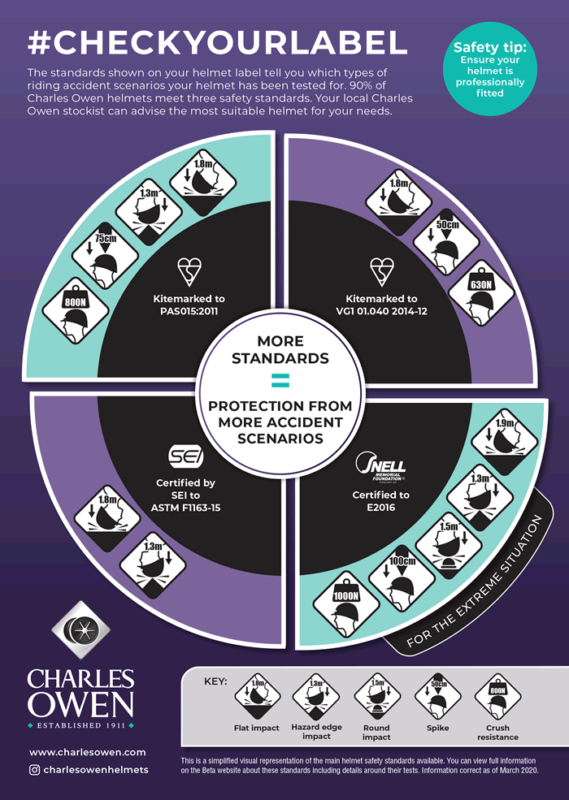At Charles Owen, we welcome any advancement or research study which shares new information about concussion to the public.
We appreciate the Virginia Tech findings in relation to low-velocity impacts. However, it’s important to highlight the potential issues in basing research methods on social media videos of accidents.
Whilst there is a wealth of content available, accident and concussion information should ideally be gathered from riders themselves and medical records to truly understand how concussion was caused.
Charles Owen are a major contributor to rider accident research. We have been gathering detailed information about rider accidents for a long time, with over 1,000 case studies to date. One way we do this is via our online Accident Report form.
This first-hand data is used by the equestrian industry to develop safety standards to improve helmet safety across the industry.
The three main international safety standards of VG1, PAS:015 and ASTM incorporate low-velocity impacts as seen in this study, as these do play a role in everyday accidents.
However, there are also crucial tests such as spike tests, rotational tests, crush tests and hazard edge tests that also need to be considered when evaluating helmet safety.
These tests are peer-reviewed and developed over many years by medical consultants, industry experts and PhD researchers to replicate major causes of rider head trauma and concussion. This might be a rider landing on their head, being kicked, hitting a fence or rock, or being rolled on (to name a few).
We encourage all riders to ensure their helmets meet a minimum of three safety standards (PAS:015, VG1 and ASTM) as this ensures your helmet has been tested against nine different accident scenarios. As every rider will know, every accident is different in the levels of force, speed and angle involved.
The helmet study by Virginia Tech focuses on just one potential cause of concussion. Whilst this can be useful to simplify the science, we advocate that consumers dig deeper to understand the accepted industry standards for themselves.
Start by watching this short video with Laura Kraut.
This video is a good case study of the importance of the crush and spike helmet test, seen in the PAS:015 standard.
The diagram below shows the variation in tests used to test riding helmets.
Read our guide on the equestrian industry standards to learn about the tests they involve and Charles Owen’s work on rider concussion safety research. For more information please feel free to contact us.
